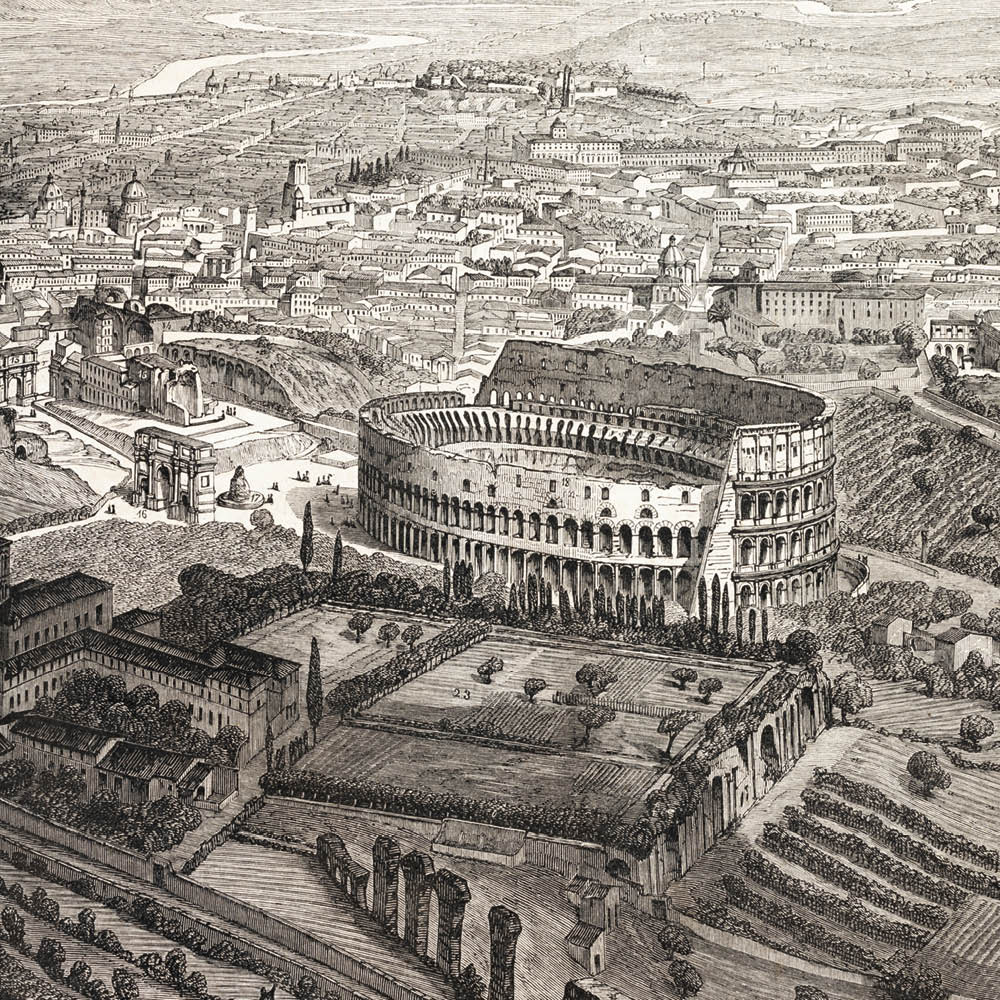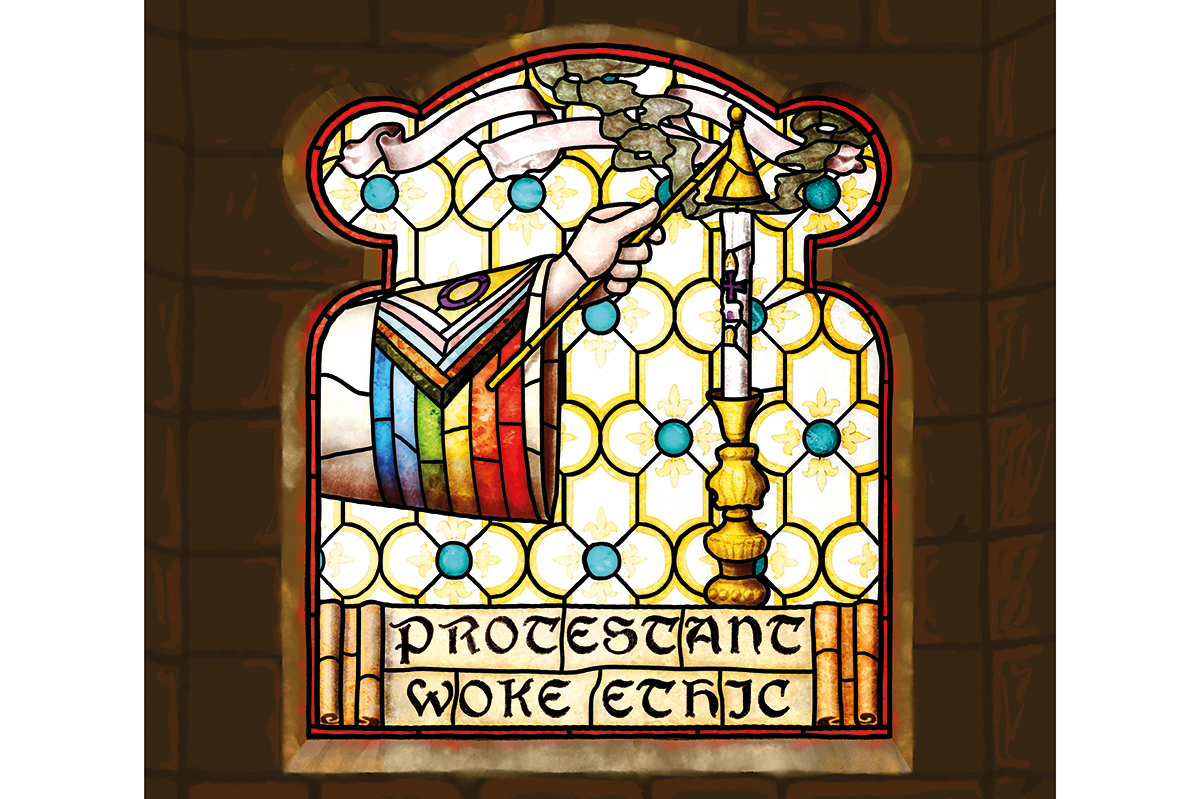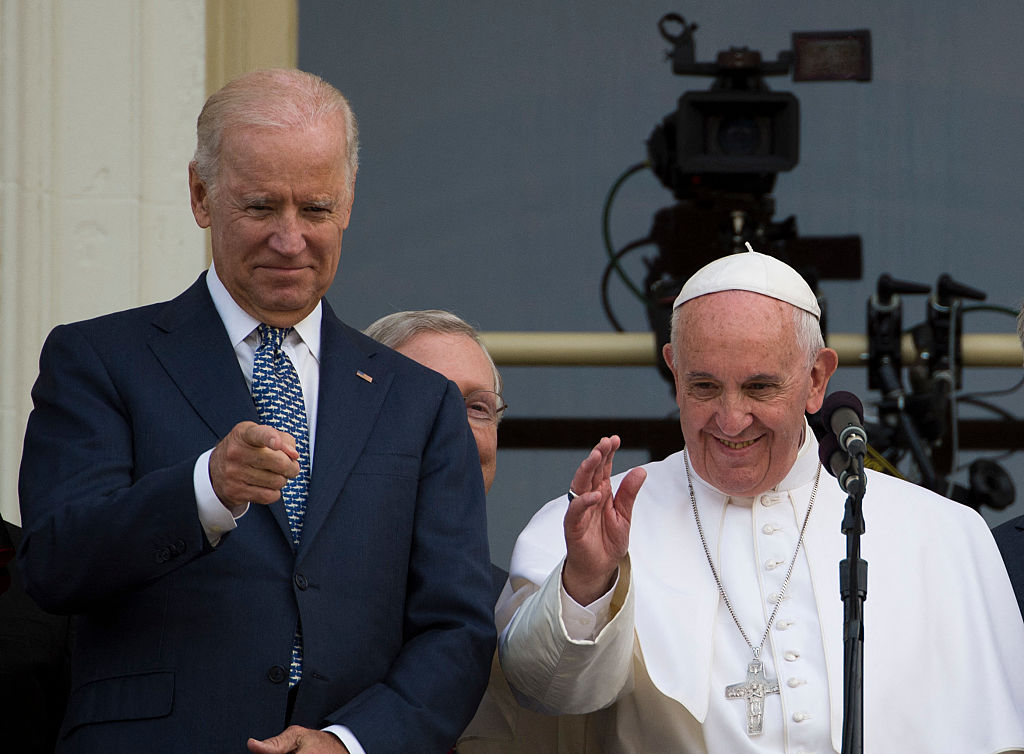Rome
Like a Parioli matron shedding her curlers, pins and hairnet in anticipation of a major family celebration, Rome’s monuments are emerging from shrouds of cladding and scaffolding ready for their close-up. The angels and river gods of the Ponte Sant’ Angelo and the Piazza Navona shine as blinding white as the day they emerged from Bernini’s workshop. The ancient granite basins of the Piazza Farnese fountains shimmer with an ethereal bluish light. The big occasion is the Papal Jubilee year of 2025, expected to draw a whopping 32 million visitors. That’s more than ten times Rome’s population, and half as many visitors again as in a normal year. If you’re planning a visit, do it soon before the city is entirely swallowed by crowds.
The Jubilee kicked off on Christmas Eve when Pope Francis knocked (from his wheelchair) on the Holy Door of St. Peter’s Basilica, which is opened only once every quarter century. Any pilgrim who passes through this portal — or the Holy Doors of the three other Papal basilicas, plus an extra one in Rome’s Rebibbia Prison — has a chance of a plenary indulgence with “the remission and forgiveness of sins” including “suffrage to the souls in Purgatory,” according to the Jubilee Penitentiary Guide. Those wishing to take the Church up on this four-times-a-century-only special offer will be relieved that the rules have relaxed considerably since the first Papal Jubilee in 1300. Back then, pilgrims had to go through every Holy Door every day for fifteen consecutive days. This time round just the once will suffice, with bookings available via a special pilgrims’ app.
Hostile observers — for instance Martin Luther, who spent some time in Rome in 1510 during his career as an Augustinian monk — have claimed that Jubilees were invented as a Papal money making exercise designed to boost the pilgrim trade. “The Church of Rome has become the most lawless den of thieves, the most shameless of all brothels, the very kingdom of sin, death and hell,” wrote Luther, who seems not to have enjoyed his stay in the city he referred to as the Synagogue of Satan. “Not even Antichrist, if he were to come, could devise any addition to its wickedness.” Though much has doubtless changed since Luther’s day, Rome’s entrepreneurial holy spirit still runs strong. Special pilgrim centers sell a wide selection of Jubilee merch — including fetching green pilgrims’ capes. And the hit show of the year, advertised on billboards all over the city, is Bernadette de Lourdes: The Musical.
Rome is a company town, and the Catholic Church is Italy’s most globally influential institution. Small wonder, then, that the Italian state has opened its purse strings to the tune of €4.8 billion and counting to restore, rebuild and generally scrub up the city in a program dubbed Roma: Caput Mundi, or Capital of the World. Four major squares have been completely remodeled, along with thirty underground stations. A whole new metro line is under construction, a new underpass built under the Tiber embankment, along with 600 other major urban improvement projects. “It’s a miracle,” says Rome’s mayor, Roberto Gualtieri. But for many Romans the true miracle is the appearance of stylish column-shaped rubbish bins on every city street corner which are emptied with stunning regularity by a fleet of mini rubbish-carts. At a fiscal controller’s keystroke, Rome’s famously awful litter problem has been banished like a bad dream.
Are the Romans happy at all these furious improvement programs? Of course not. One Roman prince complains bitterly that a new cycle lane has banished a whole street’s worth of parking spaces. His family home is one of several in town that boasts both a Papal throne and a Caravaggio, and he can park in his own courtyard. But where will his guests and staff now leave their cars? Rome must be one of the last capitals in Europe where residents of the historic center still expect to keep their cars in front of their houses — and for free. From the window before which I write these words I can see the Tiber, the Castel Sant’Angelo — and our battered old BMW, imperfectly parked right on the Embankment.
Friends in low places as well as high are also discontented. Our local tramp Fede, the very smelly and opinionated inhabitant of the Piazza San Giovanni dei Fiorentini, is annoyed at the great program of relaying all of Rome’s cobblestones. These handknapped black stones, known as sanpietrini (a witty play on the double meaning of pietro, both Peter and stone), were mostly laid during the reign of Pope Pius V (1566-72). Which means that one is walking literally on the same stones as Caravaggio, Goethe and Garibaldi. The sanpietrini are not being replaced but merely re-laid on new sand and gravel beds to erase their current ankle-breaking dips and divots. This is done painstakingly by hand. Fede’s objection is not so much to the process as to the personnel making their laborious way down Via Giulia, who are from Puglia. These hardworking fellows, like all Italian workmen, conduct shouted conversations with each other, keeping up a running commentary in guttural and incomprehensible dialect all day long without pause. Fede abuses them as porci stranieri — foreign pigs.
This article was originally published in The Spectator’s March 2025 World edition.























Leave a Reply